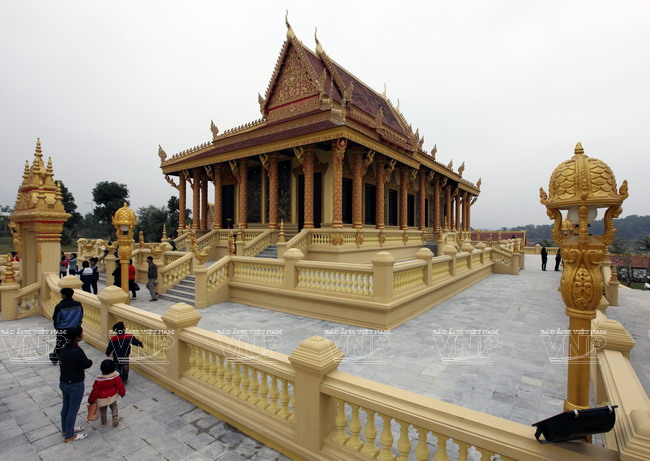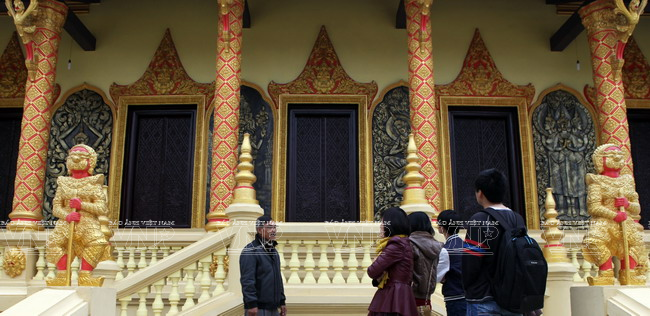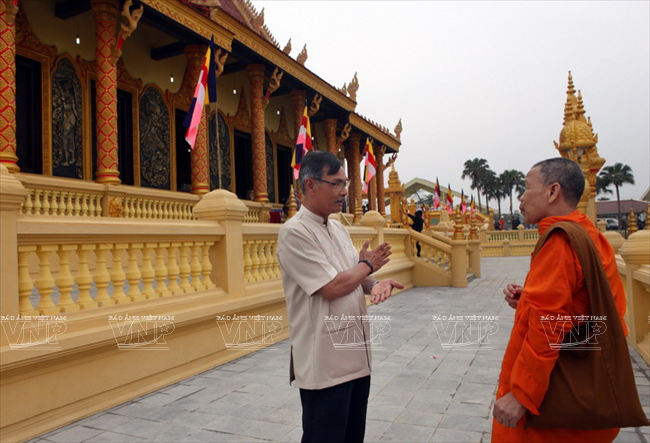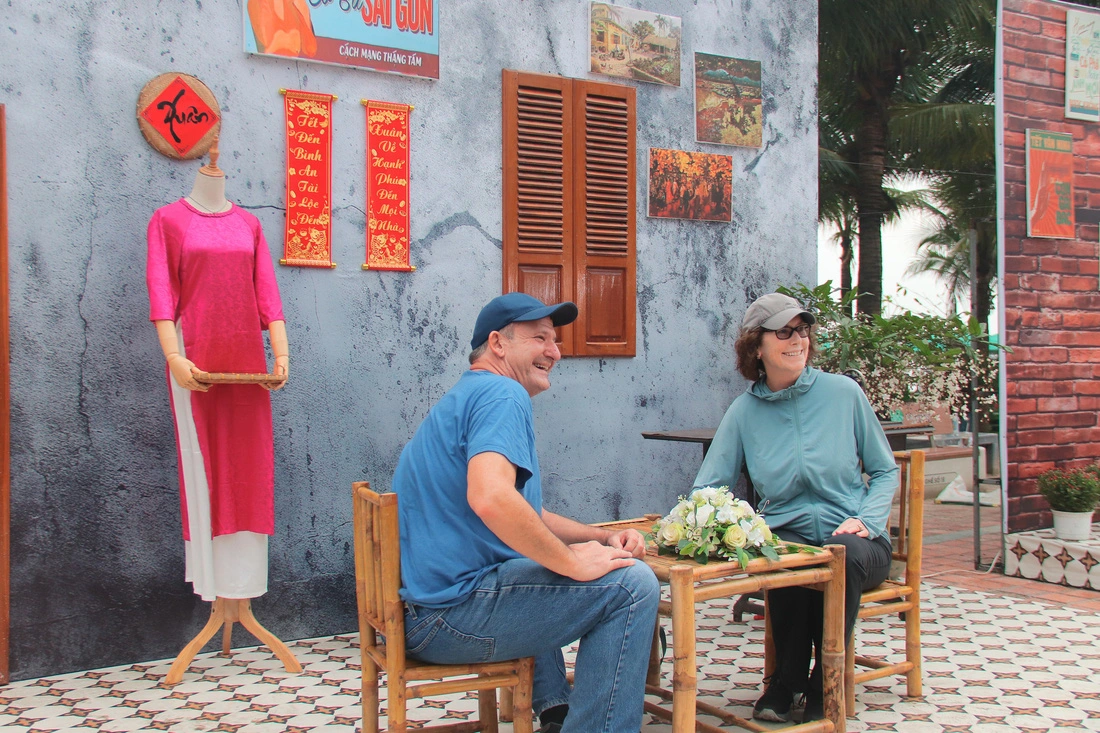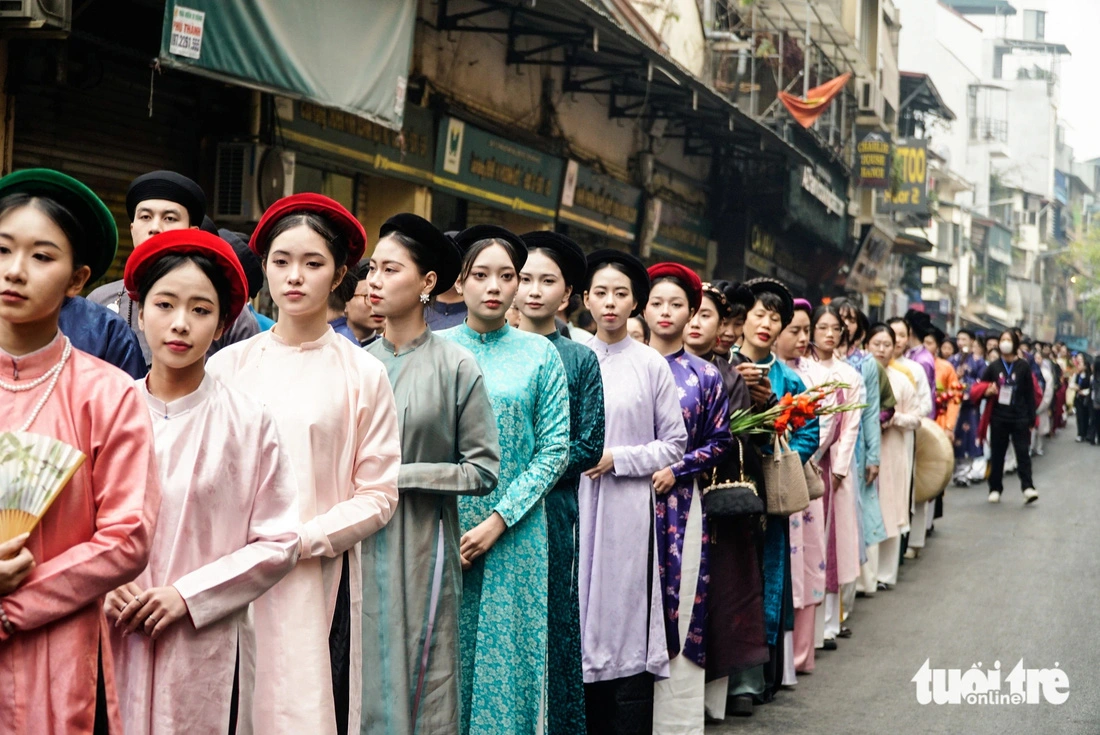Artisan Ly Let was born in Phu My Commune, My Tu District, Soc Trang Province where over 90% of the population are Khmer ethnic people. Being the only son of the family, at the age of 6 or 7 he was taught how to carve decorative patterns on Khmer pagodas by his father. When his father died, the most precious asset left to him was a notebook with all types of decorative patterns and the know-how of building Khmer pagodas. Artisan Ly Let confided: “Before my father died he told me that the pagoda was a cultural combination of the Khmer people. So the pagoda builder had to be honest and had to do the right things in accordance with the tradition, thereby preserving the soul of the nation.”
Although Ly Let has been involved in the construction and restoration of pagodas for a long time, his name became known after Doi Pagoda in Soc Trang was successfully restored in 2009. Earlier, in August 2007, the main hall covering about 200m2 of the pagoda suddenly caught fire. The fire burned down its entire roof, wooden doors, columns, beams and dozens of Buddha statues and the furniture inside. Doi Pagoda is a special relic at a national level. It was built more than 400 years ago and had many Buddhist imprints of the Khmer people in the south. So the State decided to restore it as original and artisan Ly Let was assigned to do this job.
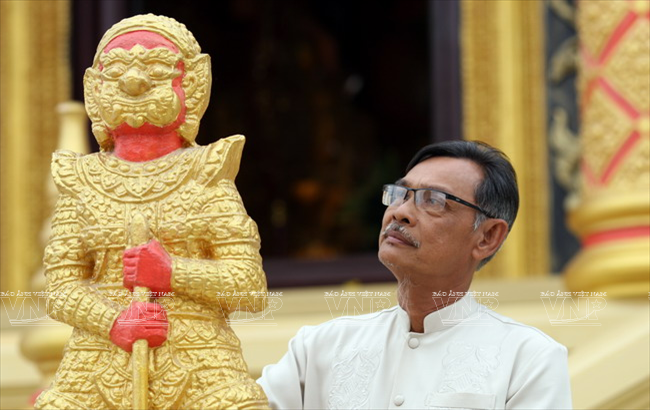 Artisan Ly Let is well-known domestically and internationally as the chief architect of the projects on restoring and building Khmer pagodas. 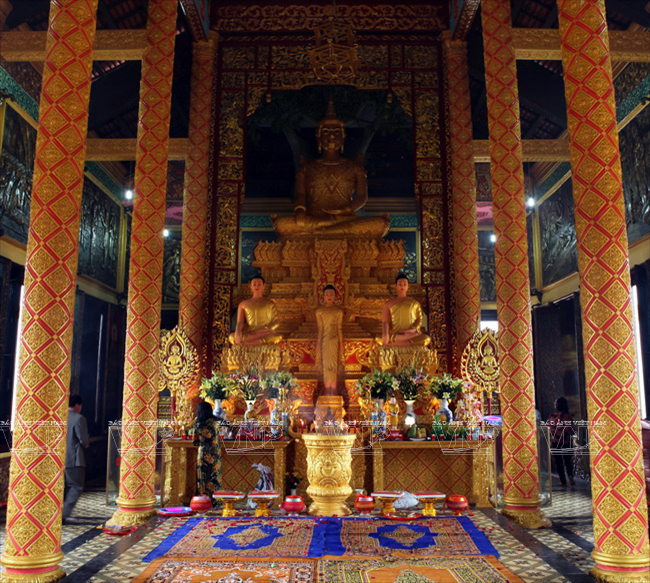 It took the artisan’s most concerted effort to build the Khmer pagoda’s main chamber in the Vietnam National Village for Ethnic Culture and Tourism in Son Tay, Hanoi.  Artisan Ly Let explains to young people about decorative patterns and designs of the Khmer pagoda in the Vietnam National Village for Ethnic Culture and Tourism in Son Tay, Hanoi. |
All Khmer people in Soc Trang recognise that the restored Doi Pagoda was very similar to the original pagoda, from its decorative patterns outside to its interior. The restoration was so successful that the Agence France – Presse (AFP) News Agency reported it as an event of historical hallmark of Vietnam and praised artisan Ly Let as the chief architect of this project.
In the construction and restoration of the pagodas of Khmer architectural style, it took artisan Ly Let’s most concerted effort to build a Khmer pagoda in the Vietnam National Village for Ethnic Culture and Tourism. He said: “I am particularly excited about this project because this is the first Khmer pagoda in the north. It is built not for display but it is a real pagoda with monks and serves as a place for religious practices of the Khmer people who are living and working in the capital city.” So, he has spent much effort and dedication on this special project to provide visitors and residents in the capital city of Hanoi with a typical cultural space of the Khmer people.
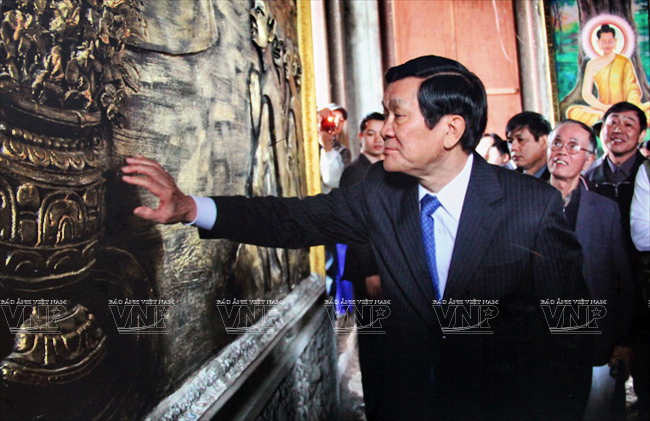 State President Truong Tan Sang visits the Khmer pagoda in the Vietnam National Village for Ethnic Culture and Tourism in Dong Mo, Son Tay, Hanoi.
|

